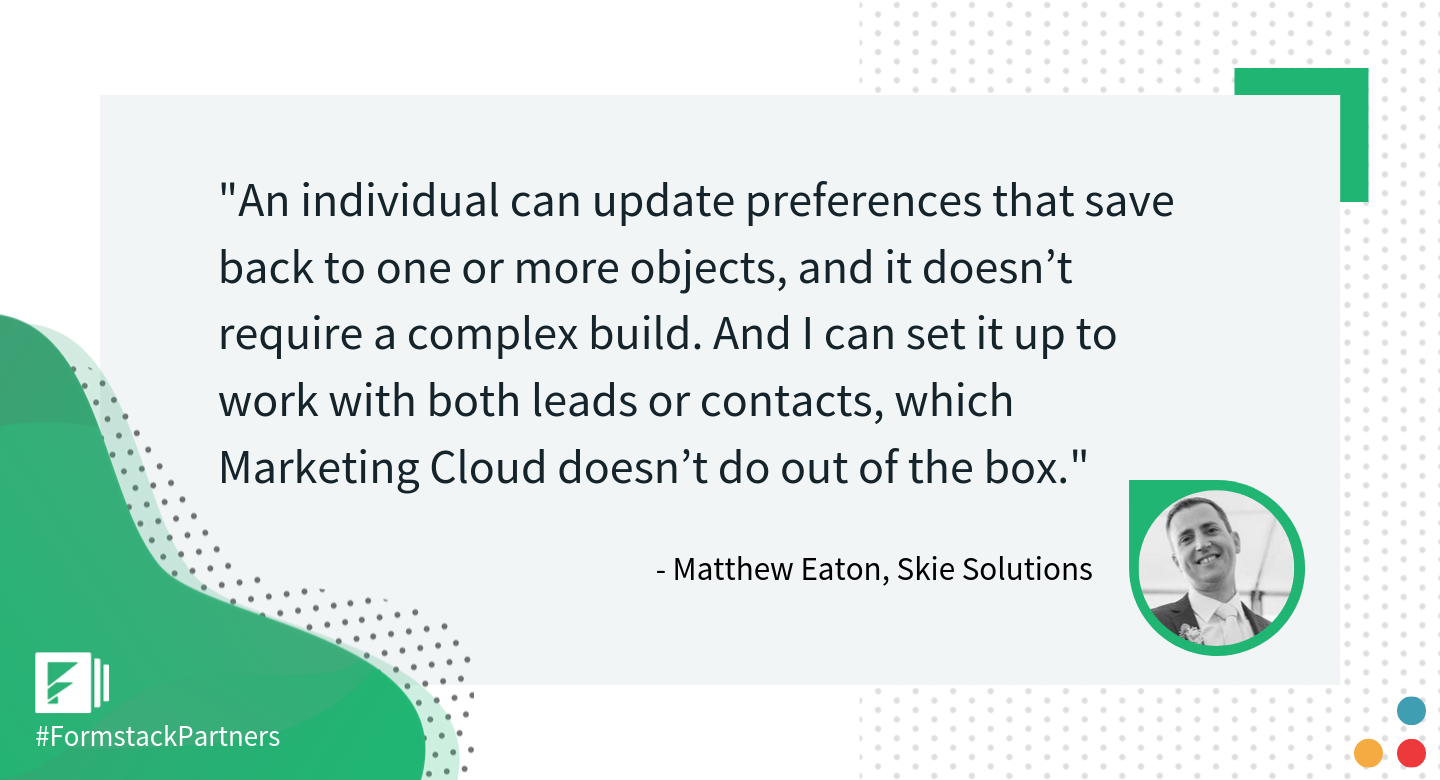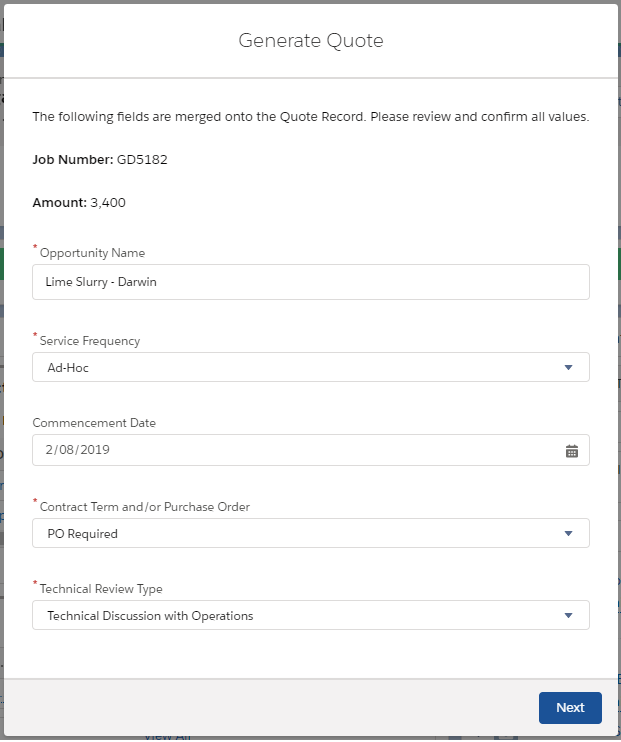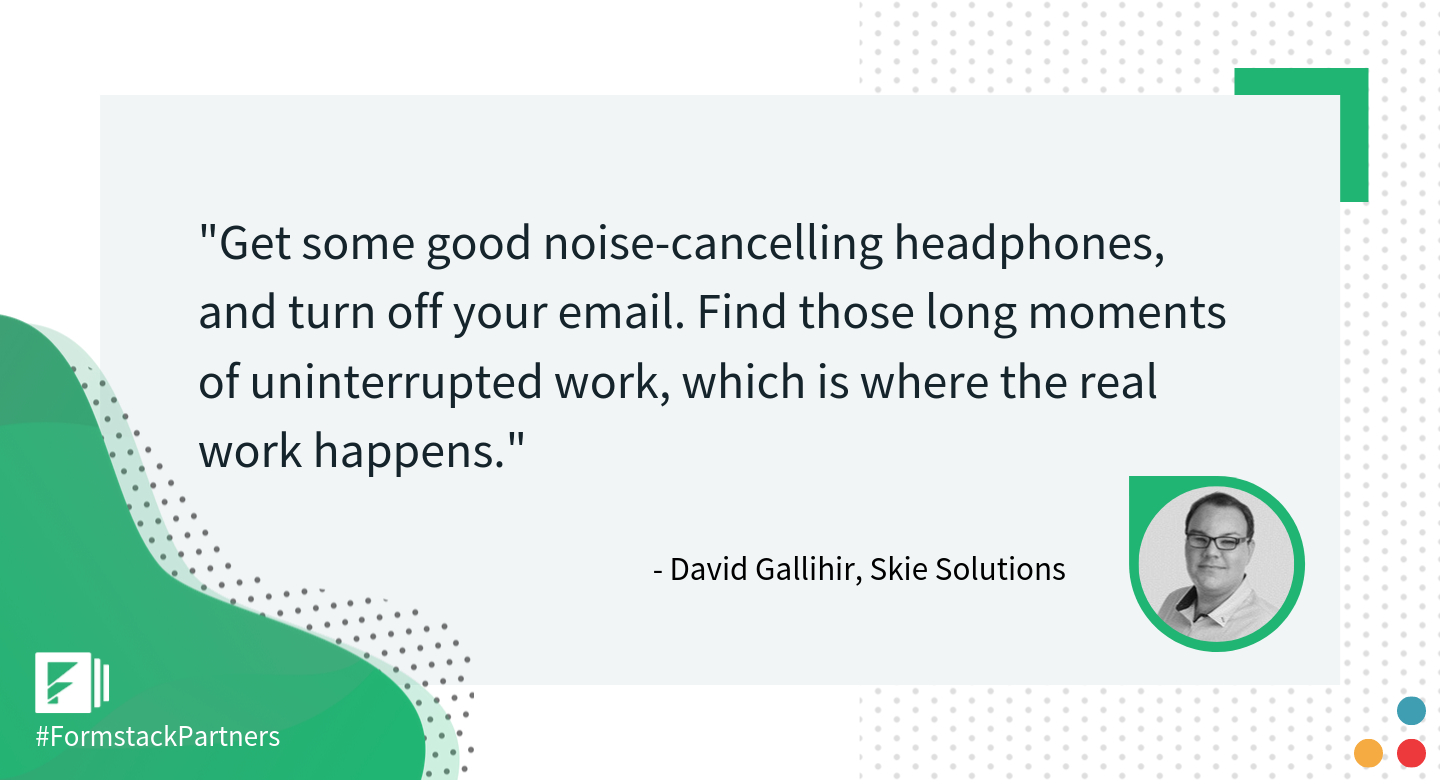Our VP of Partnerships Zak Pines recently sat down with the team of directors and co-founders from Skie Solutions—Adam Troughear, David Gallihir, and Matthew Eaton—as part of our ongoing Partner Interview Series. Zak, Adam, David, and Matthew had a far-ranging conversation that touched on the team’s world as a Salesforce consultancy in Australia and their approach for data collection, data-driven documents, and eSignature processes in Salesforce. Here’s an abridged transcript of the chat.
Background on Skie Solutions
Zak: I’m looking forward to this because I’m going to be able to get three different perspectives: the business or customer side from Adam, the use case side from Matthew, and the technical side from David. Let’s get going. Let’s start with background on Skie Solutions. Adam, do you want to take that one?
Adam: We are a Salesforce partner. We create clean, elegant solutions based around Salesforce and the Formstack products—forms, documents, and signatures. We’re helping customers to streamline their processes with a heavy focus on Salesforce.
Zak: Can we go through how you’ve developed in this space and where each of you specialize?
Matthew: Before I was involved in Salesforce, I worked in social media consulting and website marketing, after studying computer science and cybernetics. I’ve been in the Salesforce ecosystem now for four years, specializing around marketing automation, both Pardot and the Marketing Cloud.
David: I’m a civil engineer by trade. I’m self-taught around a bunch of technologies in eCommerce and SaaS. I love building things. I’m a horrible sales person. I enjoy working to consult with customers and designing the technical architecture of our client solutions.
Adam: David hates selling, and that’s where I come in [laughs]. I worked for five years for Swisse Wellness doing digital transformation. I love working with customers to frame out the solution around what’s possible. But I’m not the one to build it—that’s the rest of our team.
I grew up playing drums, and I moved from Australia to the States and toured with bands. I got into technology in my last few years in the US before moving home. After Swisse, I got into the Salesforce world with Matt and David.
Zak: You’ve founded Skie as a Salesforce consultancy just in the past year or so. What would you say are the founding principles of the business?
David: They’re really simple: be honest and do good work. That allows us to build great trusted relationships with our customers.
Adam: It’s also about being completely focused on customer experience. There are a lot of technologies out there, but for us, it starts with solving a business problem—ensuring we address customer experience as part of the requirements, and backing that with the right flexible, underlying technologies.
We’re not starting a customer engagement with “This is how Salesforce works.” We’re starting by understanding the business requirements completely, then designing the solution from there. Salesforce and Formstack products are a big part of the solution.

Customer Use Cases for Collecting Data & Automating Processes
Zak: That’s great background. Let’s get into some specific customer scenarios.
Adam: We work with the Hawthorne Football Club here in Melbourne. Corporate hospitality is a key part of the services they provide.
With the Hawks, as we call them, the challenge for corporate hospitality is you get orders for events, but you generally don’t find out until later on who will be attending the event. So they needed a way, post-sale, to easily update all those records in Salesforce.
David: That would typically be really challenging to build. You’d be looking at a very complex Visualforce page. But we use your Salesforce forms so that we can create objects in Salesforce and have easy ways to update them as they learn more details, such as filling in the names of the attendees as they get closer to the event.
It’s the kind of thing that would be a really tough custom build to program, so there’s a lot more value to both the customer and to us by using your Salesforce forms. It has all the logic and capabilities built in for data prefill to manage conditional logic and rules for creating and updating multiple objects right in Salesforce.
Matthew: What’s also nice is once you have the license, you can use it for multiple use cases. So I’m also using Formstack for Salesforce to create a communication preference center for the Hawks. An individual can update preferences that save back to one or more objects, and it doesn’t require a complex build. And I can set it up to work with both leads or contacts, which Marketing Cloud doesn’t do out of the box.

Zak: What I love about working with our partners is you’re at the forefront of how customers are using our products. Are you seeing use cases beyond forms?
David: Absolutely. We first came to you for data-driven documents. We’re longtime users of WebMerge (now Formstack Documents); if it can be done, we’ve done it with that tool.
We worked on a use case just the other day that is remarkably simple but also really powerful. They need to send non-disclosure agreements to customers because they are working with the customers’ financial information. In one scenario, the salesperson is on the phone and collects all the details on the phone. Then, Formstack Documents generates the document, and it’s sent for signature via InsureSign. And finally, it automatically saves back into Salesforce as a signed document.
There’s a second scenario where the salerspon doesn’t have the information. In that case, they will send the customer a form and ask them to fill it out. Then, based on the form data, Formstack Documents will automatically generate the document. And then the same process from there for digital signature and automatically saving back into Salesforce.
Adam: It’s a nice loop using Formstack products for forms, document automation, and eSignature.
Getting Started with Formstack via Data-Driven Documents
Zak: Do you recall how you got started with Formstack in the first place?
David: It was to solve a documentation automation use case for customers. Conga can’t do automation unless you start paying $1 per document. We found WebMerge (now Formstack Documents) could do it, frankly, better and with more flexibility on cost for our customers.
Zak: You talked about customer experience earlier. What are some of the customer experiences you are building around document automation?
David: We’ve set it up so a customer can get a form with the inputs needed for the document—for example, a quote. Some of that data is prefilled from various objects within Salesforce, and the user can review, verify, and add any missing information. Then, Formstack Documents automates the document creation and approvals and saves it as an attachment back in Salesforce.

Adam: We’re doing that for a waste handling company and their salespeople. It’s a better package than having to update data in a bunch of different places.
Native Salesforce Forms & No More Custom Development
Zak: Oftentimes, partners will learn or get certified on one of our products and then expand into others. After documents, how did you expand?
Matthew: We liked that you offered a full set of products. The native Salesforce app is powerful for any Salesforce customer. The fact that it’s a native app is a game changer—you don’t need to leave the Salesforce interface. We can show a customer admin how they can manage the forms and the rules without having to go to another platform.
David: There are some really powerful technical features. The way you form prefill doesn’t require URL parameters. Some other form tools need URL parameters for prefill, which is not a secure way to pass data. Formstack generates a URL with a hash, which is used to prefill the data.
Adam: For me, it’s a lot easier to explain to a customer. There’s no need to map data or sync data. It’s all right there natively in Salesforce. As soon as some kind of data collection use case comes up, we know that nine times out of ten, or more, Formstack is the appropriate solution.
Zak: Is the value typically apparent to the customer you are talking to?
Adam: It’s fairly simple. Customers are looking for Salesforce as a single source of truth. By having your form tool native, it means all of your data is living in your CRM, and it’s far easier for you to set up processes that use that data—and allow for it to be easily updated.
David: Right, even when you are dealing with use cases like multi-objects or progressive updates, that would traditionally be really hard or expensive to build using Visualforce pages.
Adam: Now there’s a native tool, Formstack, which can publish forms anywhere, but the data is living in Salesforce. The cost benefit analysis is straightforward.
Instead of paying for a custom Visualforce build, you can have the native application to manage it, and then use it for a whole bunch of data collection use cases. And there are easy ways to update the forms without going back to development.
As a strategic partner to our customers, we want to recommend the solutions that are best for our customers long term. That answer tends to be Formstack.
Lightning Round
Zak: This will be a little longer than our typical lightning round with all three of you weighing in, but let’s get to it. What are your personal interests or hobbies?
Matt: I’m very into playing squash. And now, we’re expecting our first child just before Christmas, so I’m busy preparing for that.
Adam: I have lots of interests—golf, drums, snowboarding, scotch. I’m getting married in March, so I’m part-time wedding planning and full-time Salesforce partnering right now.
Zak: David, I saw from your website that we share a common interest in cafe lattes?
David: Ah, yes. I like to stay caffeinated during the workday. I need to.
Zak: We’ve talked some about helping customers be productive. Can you each give me your favorite productivity tip?
Adam: Mine is to delete Facebook. I deleted it earlier this year, and it’s been fantastic.
David: Get some good noise-cancelling headphones, and turn off your email. Find those long moments of uninterrupted work, which is where the real work happens.

Matthew: Limit outside distractions so you can focus on what you are doing in the moment.
Zak: What’s your favorite TV show?
Adam: I watch sports—American Football (NFL), Australian Football (AFL), Rugby League, and golf. I wake up at four in the morning to watch golf. I wake up at three in the morning for NFL games.
Zak: Wow. David, how about you?
David: No on the 3 a.m. wake-up for me. My favorite TV show is “The Office,” US version.
Matthew: I’ve never been a big TV fan. But I’m now watching some cartoons on Netflix—”Rick and Morty” and “Futurama.”
Zak: What’s your go-to lunch during the workday?
David: Falafel pita wrap
Adam: Same. Same place, in fact—Gigi’s Falafel. My go-to is the lamb shawarma pita.
Matthew: If I was in the Melbourne office, I’d also be in on the lamb shawarma. It varies for me based on what I’ve cooked the night before.
Zak: OK, last question. We wrap up each interview with this: Is a hot dog a sandwich?
David: Of course not.
Matthew: No. That’s an easy one from an Australian point of view.
Adam: Right. Remember, for us, a chicken sandwich is a chicken burger. So a hot dog is definitely not a sandwich.
Zak: I think that’s the best answer I’ve gotten to this question so far. I’m glad we are getting the Australian perspective.
Looking for your next step? Check out Formstack’s partner program for consultants, agencies, and tech partners.











